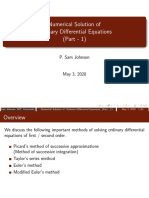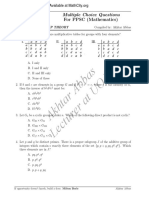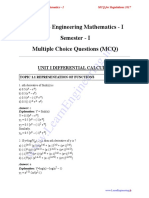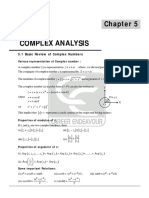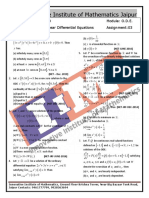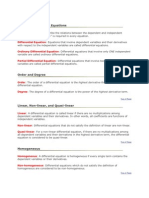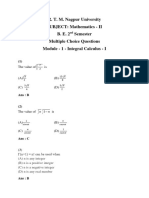0% found this document useful (0 votes)
328 views4 pagesDifferential Equations
The document discusses differential equations. It defines a differential equation as an equation containing one or more functions and their derivatives. Differential equations are used in fields like physics, engineering, and biology to model real-world phenomena involving continuous change, like cooling or growth. The document outlines different types of differential equations, methods for solving them, and provides an example of using a differential equation to model the cooling of coffee.
Uploaded by
sandhya ganesanCopyright
© © All Rights Reserved
We take content rights seriously. If you suspect this is your content, claim it here.
Available Formats
Download as DOCX, PDF, TXT or read online on Scribd
0% found this document useful (0 votes)
328 views4 pagesDifferential Equations
The document discusses differential equations. It defines a differential equation as an equation containing one or more functions and their derivatives. Differential equations are used in fields like physics, engineering, and biology to model real-world phenomena involving continuous change, like cooling or growth. The document outlines different types of differential equations, methods for solving them, and provides an example of using a differential equation to model the cooling of coffee.
Uploaded by
sandhya ganesanCopyright
© © All Rights Reserved
We take content rights seriously. If you suspect this is your content, claim it here.
Available Formats
Download as DOCX, PDF, TXT or read online on Scribd
/ 4






